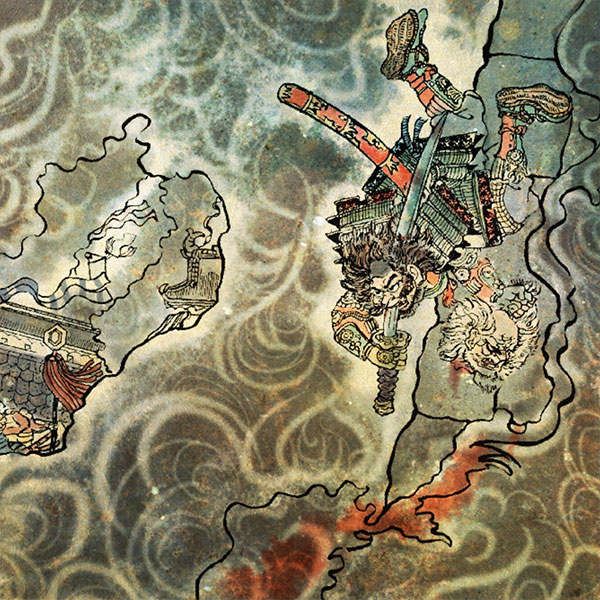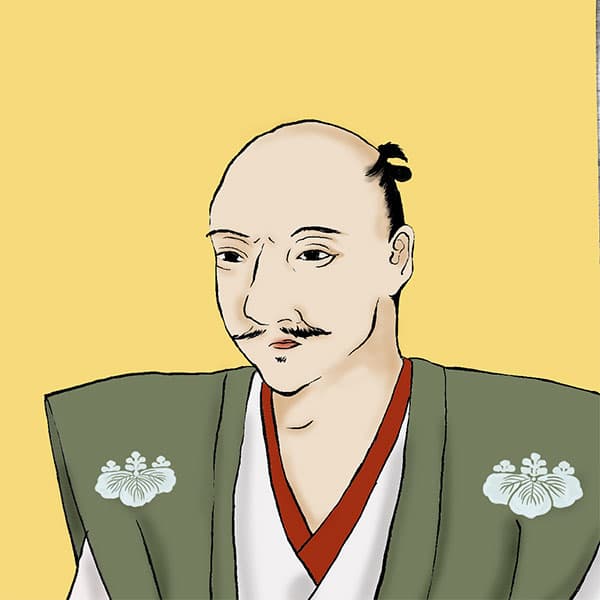Battle of Shigiyama Castle (1/2)The last moments of Okuo Hisashi Matsunaga

Battle of Shigiyama Castle
- Article category
- case file
- Incident name
- Battle of Shigiyama Castle (1577)
- place
- Nara Prefecture
- Related castles

Shigiyama Castle

Tamon Castle
- people involved
Hisashi Matsunaga was one of the famous military commanders of the Sengoku period as the "Three Great Owl Heroes." The battle in which Hisahide rebelled against Oda Nobunaga and died a fierce death was the ``Battle of Shigisanjo Castle,'' which occurred in October 1577. It is widely known that Hisahide died in an explosion along with the tea kettle ``Hiragumo'' that Nobunaga wanted, but what was his actual end like? This time, we will take a closer look at the many misconceptions surrounding Hisahide and the outcome of the Battle of Shigiyama Castle.
Are “myths” full of lies? What is the historical Hisashi Matsunaga?
Hisashi Matsunaga was born in 1508. There are various theories about his birthplace, and it is not clear for sure, but he seems to have been of a low social status. After starting to serve Miyoshi Nagayoshi, who had established the Miyoshi government mainly in the Kinai region such as Kyoto, as a sukefu, he became a ryo in charge of negotiating with the Muromachi shogunate, court nobles, and temples and shrines, and rapidly rose through the ranks. After rising to become a core member of the Miyoshi family, he served Oda Nobunaga and was granted control of his home base, Yamato Province (Nara Prefecture). Although Hisahide has a strong image of being ambitious, he was also a cultural figure with a level of knowledge that allowed him to fulfill the role of a diplomat, and he was also famous as a tea master.
Hisahide is also known for having "committed three evil deeds." This seems to be based on an episode in the military communication book Tsuneyama Kidan, written in the middle of the Edo period. In the book, when Oda Nobunaga introduced Hisahide to Tokugawa Ieyasu, he explained, ``This old man has done three things that are difficult for people in the world to do.'' Nobunaga mentioned ``the assassination of Shogun Yoshiteru Ashikaga,'' ``the takeover of the Miyoshi family (murder of the lord),'' and ``the burning down of the Great Buddha Hall of Todaiji Temple.'' Upon hearing this, Hisahide was said to have sweatdropped and blushed.
Now let's look at each of the three evil acts one by one. First, there's the "takeover of the Miyoshi family." While Hisahide was serving Nagayoshi, Nagayoshi's younger brothers Kazumasa Sogo, Mikyu Miyoshi, and his eldest son Yoshioki Miyoshi died one after another. It is said that Mikyuu died in battle, and Kazunori Sogo and Yoshioki Miyoshi died of illness, but there is a theory that they were actually poisoned by Hisahide, and this seems to have been interpreted more broadly. Furthermore, this series of misfortunes caused great damage to Nagayoshi, and he gradually became mentally ill and his health deteriorated. Then he falls ill and passes away from this world.
The second is Shogun Yoshiteru Ashikaga's involvement in the assassination. In 1565, Hisahide's son Michi Matsunaga, Nagayoshi's successor Yoshitsugu Miyoshi, and Miyoshi Sanninshu led an army that attacked and killed the general. Hisahide is said to be the mastermind behind this incident known as the Eiroku Incident. It is often misunderstood that Hisahide also led the army, but in reality he was in Yamato Province and did not participate. This mastermind theory seems to have created the image of Hisashi Matsunaga as a villain working behind the scenes.
After the shogun's murder, Hisahide deepens his political conflict with the Miyoshi Sanninshu. The Miyoshi trio carry Yoshitsugu Miyoshi on their shoulders and attack Hisahide's castle in cooperation with Junkei Tsutsui, who had a cooperative relationship with him. Hisahide finds himself in a predicament, but at that time Yoshitsugu, who continues to be disrespected by the Miyoshi Sannin, turns to Hisahide's side. The Miyoshi trio panics over their master joining Hisahide. On the other hand, Hisahide obtained the excuse of ``avenging his master.''
After that, the Miyoshi trio invaded Yamato Province. In April 1567, the two armies clashed near Todaiji Temple. The battle that lasted for six months was called the ``Battle of the Great Buddha Hall of Todaiji,'' and during this battle, Hisahide burned down temples around Todaiji that could be used as bases. Then, on October 10, they carried out a surprise attack on Todaiji Temple, the headquarters of the Miyoshi Sanninshu, and the head of the Great Buddha was destroyed in a fire, as well as the temple itself. The burning down of the Great Buddha Hall is said to be the third evil act, but there are theories that the fire was caused by an accidental fire on the part of the Miyoshi Sanninshu, and theories that the fire started due to negligence during the war and caused the Great Buddha Hall to burn. However, the truth has not been revealed. All three acts of evil were interesting from a story perspective, but it can be said that they lacked credibility.
Hisashi Matsunaga approaches Nobunaga Oda
Afterwards, Hisahide Matsunaga managed to defeat the Miyoshi Sanninshu and Junkei Tsutsui in the battle at the Great Buddha Hall of Todaiji Temple, but the conflict still continued centered on Yamato Province, and Hisahide's side was struggling. In June of Eiroku 11 (1568), Hisahide's stronghold, Shigiyama Castle (Hiragun Town, Ikoma District, Nara Prefecture), was captured.
Under these circumstances, Hisahide's strategy was to utilize the power of Oda Nobunaga. Hisahide has been in contact with Nobunaga since around 1566, and cooperated with Nobunaga when he went to Kyoto to worship Yoshiaki Ashikaga in September 11th. He then went to Nobunaga after he succeeded in going to Kyoto, and presented him with the tea container ``Tsukumoka Minami,'' which is a famous tea ceremony utensil. During the Sengoku period, collecting masterpieces of tea utensils was popular among military commanders, and was a form of status that represented wealth and power. Hisahide was recognized as the ruler of Yamato Province, partly because he presented his famous tea caddy.
After that, Nobunaga expelled the Miyoshi Sanninshu and pacified the Kinai region. Hisahide regained Yamato Province with Nobunaga's help and became active under Nobunaga. When Nobunaga attacked Asakura Yoshikage in 1570, he was betrayed by Azai Nagamasa and fell into a predicament. During the Battle of Kanegasaki, Hisahide persuaded Motoami Kuchiki to help Nobunaga return to Kyoto.
The man who “betrayed Nobunaga twice”
Hisashi Matsunaga was active under Oda Nobunaga, but his ambition never stopped, and he even betrayed Nobunaga twice. The first time was when Nobunaga was deepening his conflict with the shogun Yoshiaki Ashikaga. In an effort to eliminate Nobunaga, Yoshiaki called on military commanders from all over the country to join the ``Nobunaga encirclement network,'' and each military commander responded to this request, and battles broke out all over the place. Among these, Takeda Shingen, the Miyoshi Sanninshu, the Asai clan, the Asakura clan, and Ishiyama Honganji Temple responded to the second siege. Among them were Hisahide and Dori Matsunaga.
In 1572, Shingen started the Nishigami operation. In this strategy, which is said to be based on the invasion of Kyoto and also said to be to defeat Nobunaga, Shingen attacked Nobunaga and Tokugawa Ieyasu. In response to these movements, Hisahide joined forces with the Miyoshi Sanninshu and rebelled against Nobunaga. Although they had been enemies for many years, they probably decided to join forces against Nobunaga, a strong enemy. However, Shingen died of illness in April of the following year. Yoshiaki Ashikaga also raised an army, but was defeated by Nobunaga and exiled to Yoshitsugu Miyoshi, Yoshiaki's sister-in-law. Nobunaga's siege network suddenly collapsed.
However, Yoshiaki, unrepentant, once again appeals to the daimyo to subjugate Nobunaga. For this reason, Nobunaga attacked the Miyoshi family, and in November 1573, Yoshitsugu committed suicide at the Battle of Wakae Castle, and the Miyoshi family was destroyed. Hisahide had raised an army with Yoshitsugu, but in December he accepted Nobunaga's recommendation to surrender and surrendered Tamon Castle bloodlessly. The following year, he visited Nobunaga in Gifu, presented him with a large amount of famous products, and begged him to spare his life. I don't know if it was because of this or because Nobunaga highly valued Hisahide, but Hisahide was forgiven. However, most of Yamato Province and Tamon Castle were confiscated by Nobunaga. Furthermore, he was forced to give up his grandson as a hostage. Later, in 1574, Hisahide became a priest and took the name ``Doi'' and retired. Hisamichi succeeded him and served Nobunaga.
Second betrayal during the attack on Honganji Temple
It was in 1576 that Hisashi Matsunaga appeared on stage again. He participated in the Oda army's attack on Ishiyama Honganji Temple. Hisahide was in charge of defending Tennoji Fort in Osaka (Tennoji Ward, Osaka City, Osaka Prefecture) with Dori Matsunaga, but in August 1577, he suddenly withdrew his troops from the battle and barricaded himself in Shigiyama Castle. I'll put it away. Surprised, Oda Nobunaga sent Hisahide's close aide Tomokan Matsui as a messenger to Hisahide and told him, ``If you have a reason for rebellion, please tell me.If you have a wish, I will listen to it.''
The article on the Battle of Shigiyama Castle continues.
- people involved

- WriterNaoko Kurimoto(Writer)I am a former travel industry magazine reporter. I have loved history, both Japanese and world history, since I was a child. I usually enjoy visiting temples and shrines, especially shrines, and often do ``pilgrimages to sacred places'' themed around historical figures. My favorite military commander is Ishida Mitsunari, my favorite castle is Kumamoto Castle, and my favorite castle ruins is Hagi Castle. My heart flutters when I see the ruins of battle castles and the stone walls of castle ruins.





